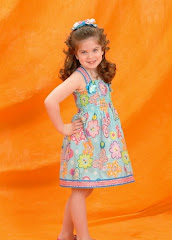 Ethiopian Easter, or Fassika, takes place in Ethiopian Orthodox churches throughout the country and celebrates the day when Jesus Christ rose from the dead after being crucified. It usually falls after Easter in the western calendar. It is a much more important festival than Christmas, and involves 55 days of severe fasting without meat or dairy. (They do get weekends “off,” so it’s really 40 days, like Catholic Lent.)
Ethiopian Easter, or Fassika, takes place in Ethiopian Orthodox churches throughout the country and celebrates the day when Jesus Christ rose from the dead after being crucified. It usually falls after Easter in the western calendar. It is a much more important festival than Christmas, and involves 55 days of severe fasting without meat or dairy. (They do get weekends “off,” so it’s really 40 days, like Catholic Lent.)Palm Sunday or Hosaina happens the Sunday before Fassika. This day marks the beginning of Holy Week and celebrates the story of Jesus riding into Jerusalem on a donkey. Ethiopians wear headbands of palm leaves on this day to remind them of the palm leaves that were laid in Jesus' path.
This is a climactic celebration. Fasting becomes more intense over the 55-day period and the truly devoted do not eat between Thursday prayers and Easter morning. Easter Friday is a day of preparation and church-going. On Easter Eve, the main religious mass takes place. People come to church with candles and all Ethiopians wear traditional white clothes, called yabesha libs.
 It can be a sombre and sacred event. Or, in places, anticipation builds until — with a noisy rush of sound and momentum — candles are lit from person to person, out the windows of the church and all the way out of town.
It can be a sombre and sacred event. Or, in places, anticipation builds until — with a noisy rush of sound and momentum — candles are lit from person to person, out the windows of the church and all the way out of town.After the Saturday night service (which winds up early Easter morning), people can return home where they will break their fast with the slaughtering of a chicken or sheep (or both). During all their holidays, Ethiopians eat a huge special sourdough bread called Dabo.
 They bake enough to offer a slice to everybody who visits the house. On Easter morning, the bread should be cut, after saying a prayer, by a priest or by the main man of the house.
They bake enough to offer a slice to everybody who visits the house. On Easter morning, the bread should be cut, after saying a prayer, by a priest or by the main man of the house.













No comments:
Post a Comment